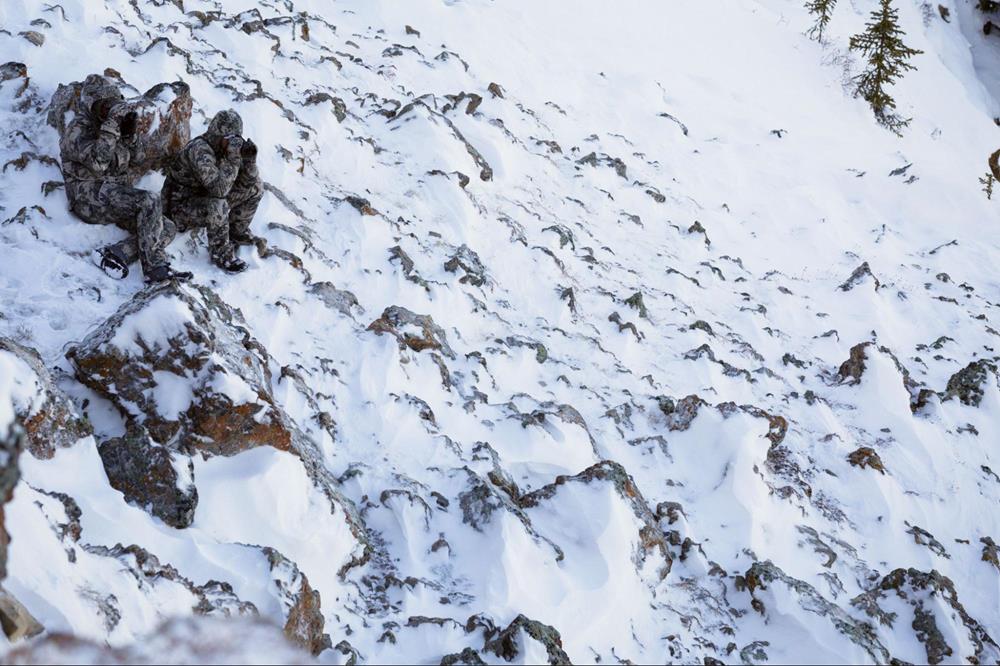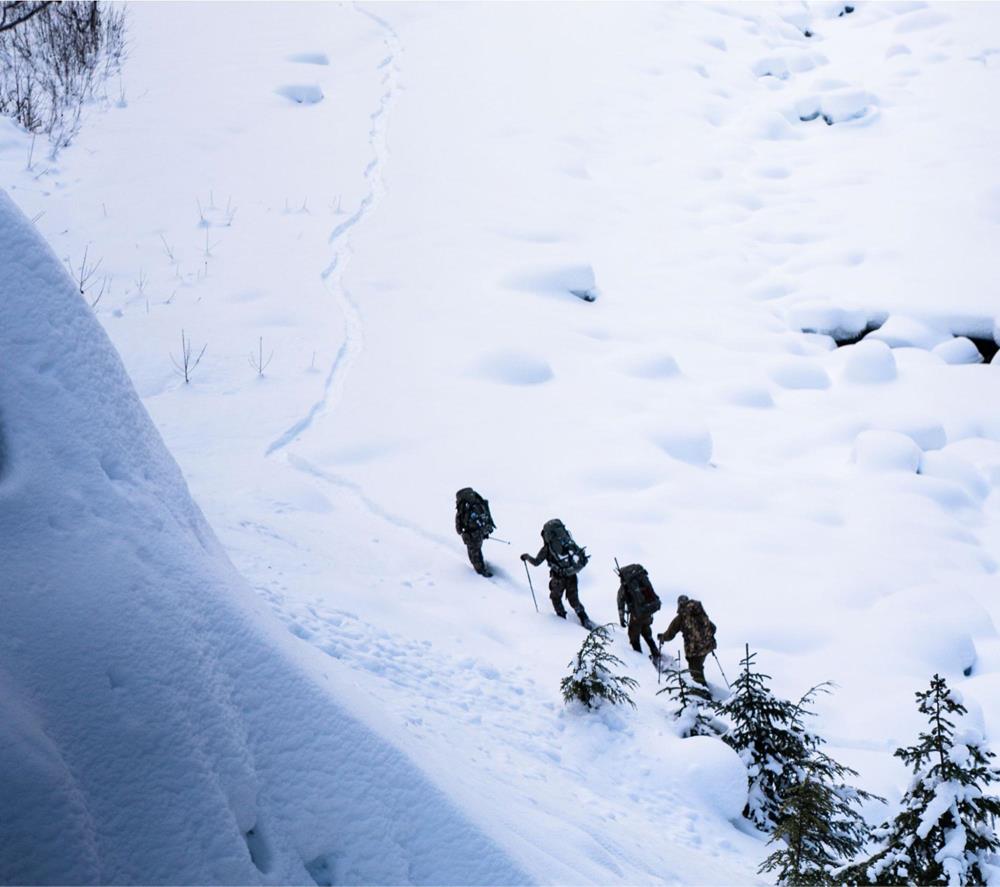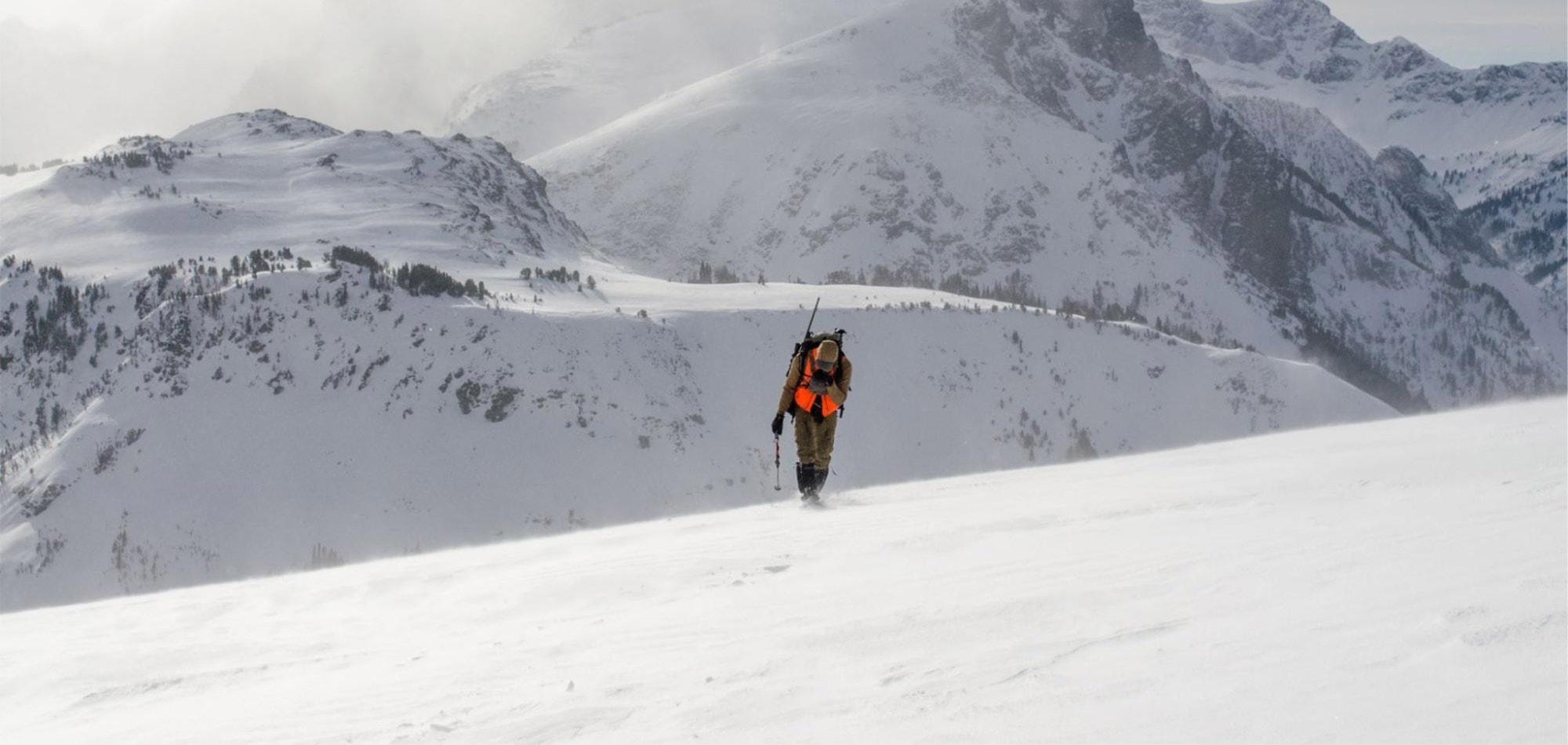Anyone who travels in the mountains when there is snow on the ground needs to know how to avoid being caught in an avalanche. This includes hunters who chase game like deer, elk, sheep and mountain goats, and anyone who might find themselves in the backcountry traveling on steep, snow-covered slopes.

The most certain way to avoid being caught in an avalanche is to stay off steep slopes and away from areas directly below steep slopes. Typically, we consider slopes steeper than 30 degrees as steep enough for snow to slide. A simple tool called an inclinometer is worth carrying in your pocket to measure slope angle. Place the inclinometer parallel to the surface of the slope you are on, and it will tell you the angle. This is a great way to learn how steep slopes are and train your eye to gauge slope steepness.
There are a variety of digital map applications, like OnX and GaiaGPS, that offer slope angle shading layers which can be a good starting point to identify slopes to avoid. Be cautious with these products as they can miss smaller, steep features due to resolution of data. Always compare maps to reality when you are in the field.

Small slopes can appear less dangerous, but if steep enough they can avalanche. Small slopes can be just as dangerous as big slopes, especially if they involve a terrain trap. A terrain trap is where the consequences of an avalanche are higher due to snow piling up deep or pushing you into trees, rocks, water or over cliffs. Many hunters encounter this type of terrain along the steep sides of gullies and creek beds and should be prepared to avoid it if covered in deep snow.
There are times when it is safe to travel in avalanche terrain and the snowpack is stable, and there are times when the snowpack is not stable and steep slopes need to be avoided. Avalanches are unlikely early in the fall when only a few inches of snow cover slopes and the snowpack doesn’t have multiple layers of snow.

When the wind blows and forms drifts of snow avalanche danger increases, as these drifts can avalanche on steep slopes. After multiple snow storms the snowpack becomes layered. Some of these layers can be relatively weak and cause the snow overlying them to collapse and slide on steep slopes.
Avalanches are most common during and immediately after snowstorms and strong wind. When it is snowing heavily or the wind is drifting snow avalanche danger is increasing, and you should steer clear of avalanche terrain.
Travel advice for hunters is not markedly different than for skiers, snowshoers, or snowmobilers. One key difference is that hunters don’t usually carry avalanche rescue gear, and many travel solo. This means if someone is buried in an avalanche there is no contingency plan and survival is unlikely. Therefore, you must be certain that steep slopes hold stable snow if you plan to travel across or directly below them. If you have any doubts find an alternate route.
For many hunters it is rare to spend much time in avalanche terrain when there is a lot of snow on the ground. Typically, recognizing and avoiding avalanche terrain under dangerous conditions is sufficient and carrying avalanche rescue gear may be overkill. Hunters that might regularly travel through avalanche terrain with deep snow should carry and know how to use avalanche rescue gear, which is a minimum of a transceiver on each person, a collapsible shovel and a probe pole.
Take one or two introductory avalanche classes and learn how to recognize avalanche terrain, so that you can avoid it when there is potential for avalanches. Check out regional course offerings and web-based resources for avalanche forecasts. If you hunt in steep, snowy terrain take time to add avalanche safety to your quiver of backcountry survival skills.

1.31.2022
